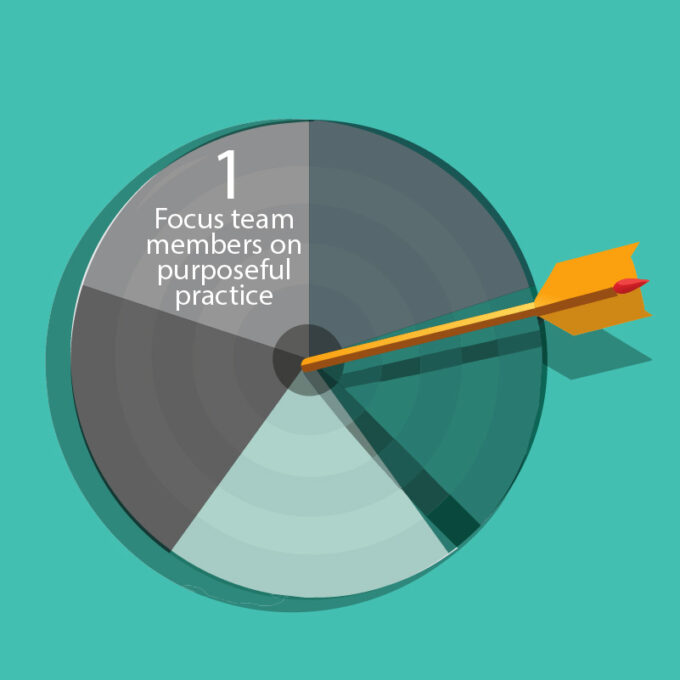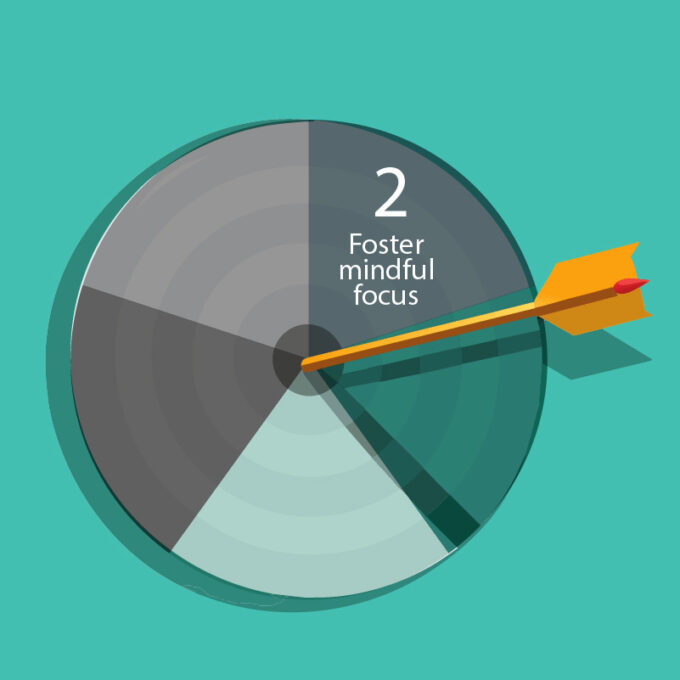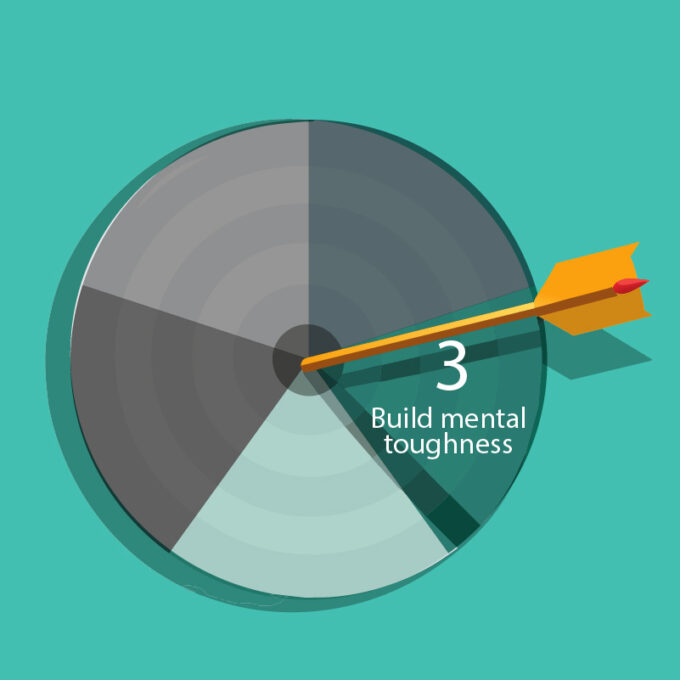
“We were so scared of our IPO”: Leaders Unplugged with former On-CEO Marc Maurer
Marc Maurer shares how ON grew from startup to IPO by defying hype, focusing on purpose, and leading with humility in this candid Leaders Unplugged episode....

by Michael D. Watkins, Juan Carlos Holgado Published September 5, 2024 in Leadership • 7 min read
In our recent Harvard Business Review article, “What Leaders Can Learn from Training Like an Olympic Archer,” Juan-Carlos Holgado and I explored how business leaders can develop themselves by applying the rigorous training techniques of world-class archery coaches.
You can apply these same approaches to build your team. Here are five archery-inspired leadership team development principles.

Similar to the approach of archery coaches, start by focusing each team member on engaging in “repetitions with a purpose” to identify which of the seven core leadership elements (active listening, communication, delegation/empowerment, decision-making, problem-solving, strategic thinking, and self-awareness/improvement) each individual most needs to develop.
Conduct a comprehensive assessment using self-evaluation, peer feedback, observations, and formal evaluations. Look for patterns in their performance, noting their strengths and consistent struggles.
Once you’ve identified each member’s primary development areas, structure personalized practice sessions focusing intensively on this element. For instance, a marketing manager struggling with delegation might benefit from being assigned increasingly complex projects to delegate, practicing task allocation, and communicating expectations. Similarly, a finance manager who is weak in strategic thinking could be involved in long-term planning exercises and cross-functional teams to broaden their perspective.
Create a safe environment for focused practice, encouraging team members to stretch beyond their comfort zones. Provide regular, constructive feedback to help them refine their approach and celebrate incremental improvements.
Concentrate on the primary development area but don’t entirely neglect other leadership elements. Look for opportunities to incorporate practice in these areas but allocate most deliberate practice time to the key focus areas.
Reassess regularly, perhaps quarterly, to determine if it’s time to shift focus to a different leadership element. By concentrating on each member’s most critical development area, their practice time can have the most significant impact, transforming “becoming a better leader” into a focused, manageable process of improvement.

In a world of distractions and noisy open-plan offices, cultivating unwavering focus and mindful presence in your team members can help give them an edge. Like skilled archers, team members can learn to channel all their energy into the task, filtering out distractions while remaining acutely aware of their environment and internal state.
To develop this skill, consider introducing mindfulness techniques such as meditation or breathing exercises. These practices can help your team members improve their concentration and self-awareness. Starting meetings with a brief mindfulness exercise or providing resources for team members to practice on their own can be effective strategies.
Encourage the use of positive self-talk. By using affirmative statements, teach your team to maintain focus and confidence under pressure. For example, before a crucial presentation, a team member might say, “Based on all the knowledge, preparation work done, and experience I have on this subject, I know I am well-prepared and capable of delivering this information effectively.”
Create distraction-free environments for important work. Designate certain hours as “focus time” where interruptions are minimized or create quiet spaces for concentrated work when in the office. Promote active listening and full engagement in meetings and discussions, perhaps by implementing a “no devices” rule during essential conversations.
Teach team members to recognize and manage their thoughts and emotions. Provide training on emotional intelligence and encourage regular self-reflection. By honing these skills, your team can cut through the noise of daily business life and direct their full attention to what truly matters, leading to improved decision-making and enhanced performance.

Much like archery coaches prepare their athletes for high-stakes competitions, you can employ techniques to develop your team members’ capacity to perform under pressure, manage stress, and maintain composure in challenging situations.
To cultivate mental toughness, use visualization exercises to prepare for various scenarios. For instance, before a major client meeting, guide your team through a mental rehearsal of the event, imagining potential challenges and successful outcomes.
Conduct drills and simulations that mimic high-pressure situations. Create time-pressured problem-solving exercises or role-play difficult conversations to help your team practice performing under stress.
Teach cognitive reframing techniques to help your team view challenges as opportunities. When faced with a setback, encourage your team to ask, “What can we learn from this?” rather than dwelling on the negative aspects.
Introduce stress management techniques such as progressive muscle relaxation or controlled breathing. These tools can help your team members regulate their physiological responses to stress, like how archers manage their emotions or control their heart rate and breathing during competition.
Develop pre-performance routines to help center and focus team members before important tasks. This might involve a quick team huddle, a personal mantra, or a specific set of preparatory actions. By building mental toughness, your team will be better equipped to handle the psychological demands of their roles, leading to more consistent performance and better outcomes.

Like archers who must adjust their technique to varying conditions, your team can develop the ability to adapt quickly to surprising situations, new challenges, and opportunities.
Exposing team members to diverse scenarios through simulations and cross-functional projects enhances adaptability. This broadens their perspective and helps them develop a more flexible approach to problem-solving. Rotating team members through different roles or departments can build a more versatile skill set.
Create dynamic problem-solving exercises that require rapid strategy shifts. For example, present a business case study, then introduce unexpected changes midway through the exercise, forcing the team to adjust their approach.
Encourage mental rehearsals of various business scenarios. Ask your team to envision different possible futures for your industry or company and consider how they might respond to each scenario. This builds cognitive flexibility and prepares them for real-world pivots.
Regularly analyze and adjust team strategies based on changing conditions. This might involve frequent strategy reviews or implementing an agile methodology that allows for rapid adjustments to projects and goals.
Foster a culture that embraces change and values flexibility. Model this behavior yourself, demonstrating a willingness to adapt and encouraging your team to propose new ideas and approaches. By mastering adaptability, your team will be better positioned to navigate disruptions, seize unexpected opportunities, and maintain a competitive edge in dynamic markets.

Strive to instill a growth mindset in your team members, much like how archers focus on continuous improvement.
To foster a growth mindset, encourage viewing failures as learning opportunities. When a project doesn’t go as planned, guide your team through a thorough post-mortem analysis, focusing on lessons learned and areas for improvement.
Celebrate effort and progress, not just outcomes. Recognize team members who take on challenging tasks or improve significantly, even if the result isn’t perfect. This encourages risk-taking and continuous learning.
Provide regular, constructive feedback focused on improvement. Have frequent check-ins with team members, offering specific, actionable advice for development. Encourage peer-to-peer feedback to create a culture of continuous improvement.
Create opportunities for skill development and learning. This might involve providing access to training programs, supporting attendance at industry conferences, or setting up internal knowledge-sharing sessions.
Model a willingness to learn and adapt yourself. Share your learning experiences with your team, admit when you make mistakes, and demonstrate how you use challenges as opportunities for growth. By cultivating a growth mindset, you’ll create a team that is more resilient, innovative, and committed to continuous improvement.
While individual development is crucial, focus on cultivating your team’s collective capabilities. Just as an archery team’s success depends on the synergy between its members, your business team’s effectiveness relies on collaboration, trust, and collective problem-solving.
To develop your team, organize collaborative practice sessions that mirror archery team training, creating scenarios where team members must work together to solve complex problems. Build trust through interdependence by assigning projects that require team members to rely on each other’s expertise and support.
Develop collective focus through regular team alignment sessions and implement team mindfulness exercises. Enhance team resilience through simulations of challenging business scenarios, teaching the group to support each other under pressure. Cultivate adaptive team dynamics by practicing rapid team decision-making and encouraging flexible role-switching.
Promote a team growth mindset by viewing collective challenges as opportunities for group learning. Conduct thorough group debriefs after projects, focusing on what the team learned and how it can improve together. Develop shared mental models about your industry, organization, and team processes through regular strategy sessions and open knowledge sharing.
Implement a system of constructive peer-to-peer feedback, like how archers give insights to their teammates. This will not only improve individual performance but also enhance the team’s collective understanding and cohesion.
By applying these principles, you can transform your group into a high-performing team that operates with an elite archery squad’s precision, focus, and unity.
Implementing these archery-inspired principles in your leadership approach can transform how you develop your team. Like archery, leadership development is a practice that requires patience, dedication, and a commitment to continuous improvement.
As you apply these principles, start small by initially choosing one area to focus on. Make these practices a regular part of your team’s routine. Lead by example, embodying these principles in your behavior. Seek feedback regularly to assess the effectiveness of these approaches and be prepared to fine-tune your methods based on results.

Professor of Leadership and Organizational Change at IMD
Michael D Watkins is Professor of Leadership and Organizational Change at IMD, and author of The First 90 Days, Master Your Next Move, Predictable Surprises, and 12 other books on leadership and negotiation. His book, The Six Disciplines of Strategic Thinking, explores how executives can learn to think strategically and lead their organizations into the future. A Thinkers 50-ranked management influencer and recognized expert in his field, his work features in HBR Guides and HBR’s 10 Must Reads on leadership, teams, strategic initiatives, and new managers. Over the past 20 years, he has used his First 90 Days® methodology to help leaders make successful transitions, both in his teaching at IMD, INSEAD, and Harvard Business School, where he gained his PhD in decision sciences, as well as through his private consultancy practice Genesis Advisers. At IMD, he directs the First 90 Days open program for leaders taking on challenging new roles and co-directs the Transition to Business Leadership (TBL) executive program for future enterprise leaders, as well as the Program for Executive Development.

Developer of Coaches
Juan Carlos Holgado is an Olympic gold medalist and a member of the winning Spanish archery team at the 1992 Barcelona Olympics. He is now a leading archery coach and developer of coaches and has helped to develop top-level international archery events. He formerly served as the director of the World Archery Excellence Centre and sports director for the International University Sports Federation.

July 8, 2025 • by Alyson Meister, Marc Maurer in Leadership
Marc Maurer shares how ON grew from startup to IPO by defying hype, focusing on purpose, and leading with humility in this candid Leaders Unplugged episode....

July 7, 2025 • by Richard Baldwin in Leadership
The mid-year economic outlook: How to read the first two quarters of Trump...

July 4, 2025 • by Arturo Pasquel in Leadership
Susanne Hundsbæk-Pedersen, Global Head of Pharma Technical Operations at Roche, shares how she has navigated the various pivots in her career, and the importance of curiosity, optimism and energy. ...

July 3, 2025 • by Eric Quintane in Leadership
Entrepreneurial talent who work with other teams often run into trouble with their managers. Here are ways to get the most out of your ‘boundary spanners’...
 Audio available
Audio availableExplore first person business intelligence from top minds curated for a global executive audience